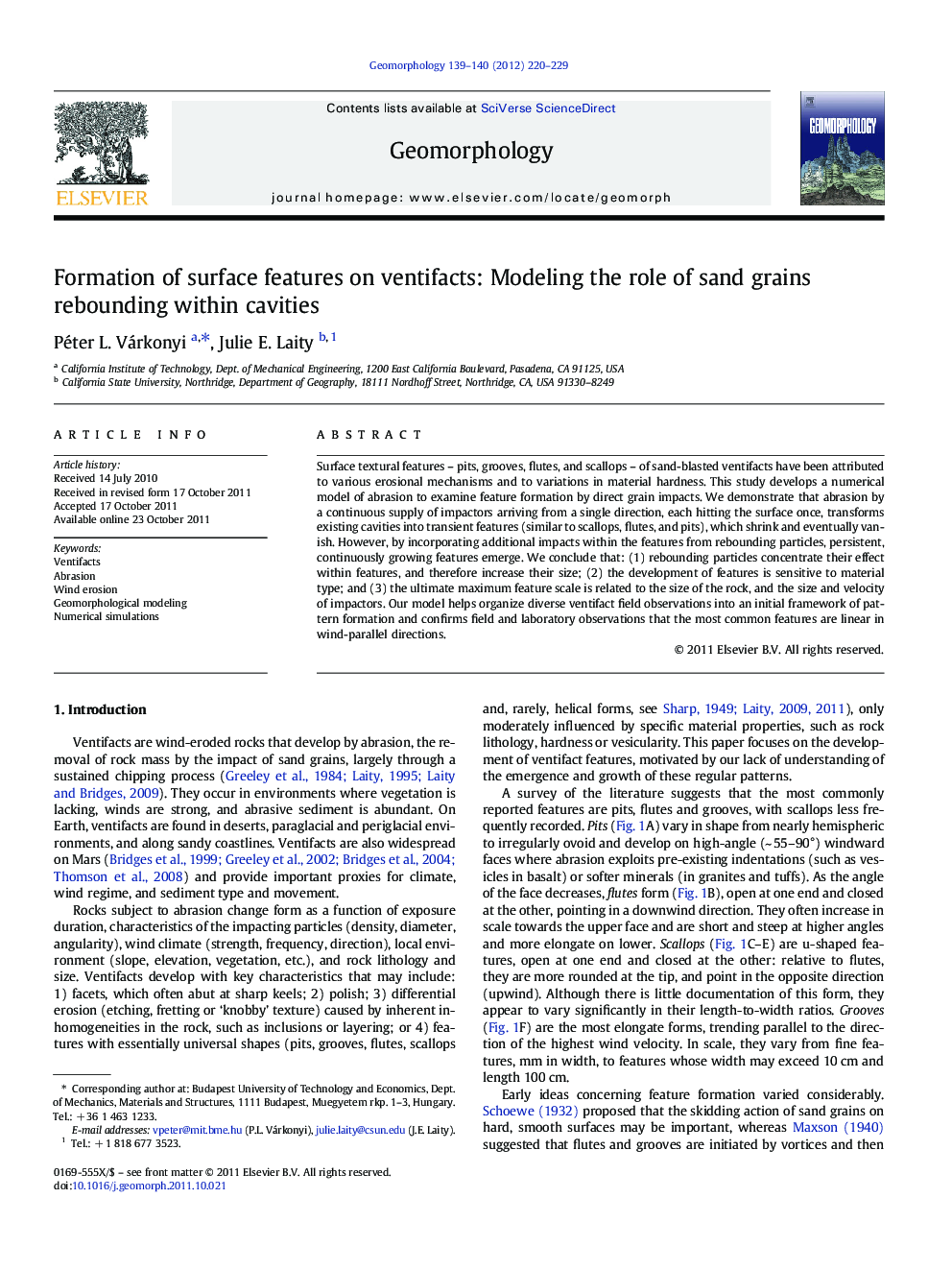| Article ID | Journal | Published Year | Pages | File Type |
|---|---|---|---|---|
| 4685308 | Geomorphology | 2012 | 10 Pages |
Surface textural features – pits, grooves, flutes, and scallops – of sand-blasted ventifacts have been attributed to various erosional mechanisms and to variations in material hardness. This study develops a numerical model of abrasion to examine feature formation by direct grain impacts. We demonstrate that abrasion by a continuous supply of impactors arriving from a single direction, each hitting the surface once, transforms existing cavities into transient features (similar to scallops, flutes, and pits), which shrink and eventually vanish. However, by incorporating additional impacts within the features from rebounding particles, persistent, continuously growing features emerge. We conclude that: (1) rebounding particles concentrate their effect within features, and therefore increase their size; (2) the development of features is sensitive to material type; and (3) the ultimate maximum feature scale is related to the size of the rock, and the size and velocity of impactors. Our model helps organize diverse ventifact field observations into an initial framework of pattern formation and confirms field and laboratory observations that the most common features are linear in wind-parallel directions.
► A computational model of rock abrasion by sand grains is developed. ► Abrasion without rebounding grains destroys surface irregularities. ► Sand grains rebounding within cavities may maintain and enlarge ventifact features. ► The development of features is sensitive to material type.
